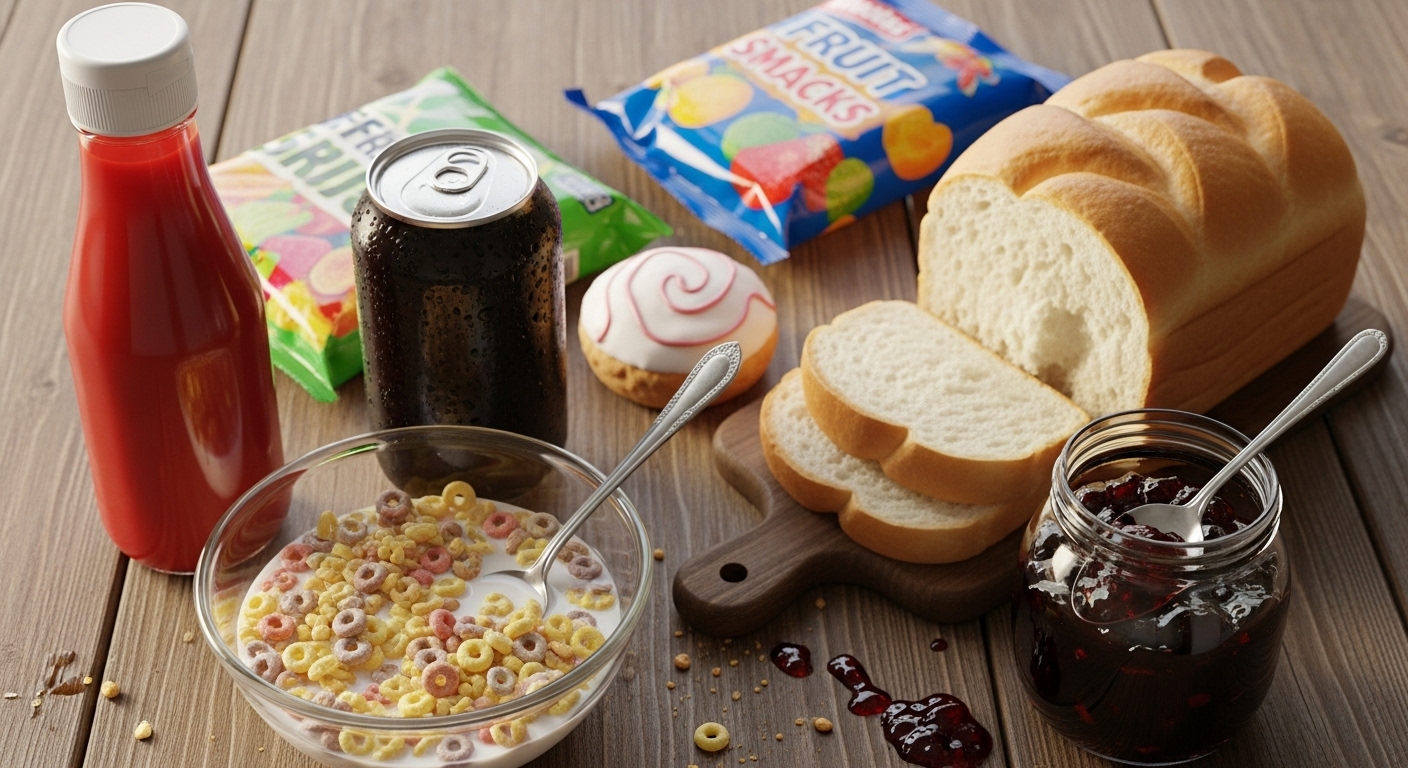Dr. Kumar’s Take
This study is a turning point: it shifts the focus of gout prevention beyond meat and alcohol to sugar, especially fructose. For years, patients were told to avoid purines but could drink juice freely. This research shows that was a mistake. If you’re prone to gout, managing sugar intake may matter as much, or even more than cutting red meat.
Key Takeaways
- Men who drank two or more sugary soft drinks daily had an 85% higher risk of gout compared to those who rarely drank them.
- Fructose intake doubled gout risk when comparing the highest to lowest intake groups.
- Fruit juices and fructose-rich fruits (apples, oranges) also increased risk, though less strongly.
- Diet sodas were neutral—they did not raise gout risk.
- Fructose raises uric acid by depleting cellular energy stores, a mechanism similar to alcohol.
Actionable Tip
If you’re at risk of gout, limit sugary drinks and fruit juices. Water, sparkling water, coffee, or tea are safer choices. Whole fruits can still be part of your diet, but emphasize lower-fructose fruits like berries over daily servings of juice or apples/oranges.
Study Summary
This 12-year prospective cohort study followed 46,393 men with no history of gout. Dietary intake was tracked with validated food-frequency questionnaires. During follow-up, 755 men developed gout, confirmed by American College of Rheumatology criteria.
Study Design / Methods
- Population: Male health professionals (ages 40–75 at baseline).
- Exclusions: Those with pre-existing gout.
- Follow-up: 12 years, with questionnaires every 2–4 years.
- Exposure: Intake of sugary soft drinks, diet sodas, fruit juice, and fructose-rich fruits.
- Outcome: Incident gout, meeting ≥6 of 11 ACR criteria.
- Analysis: Cox proportional hazards modeling, adjusting for age, BMI, alcohol, meat, seafood, dairy, diuretics, hypertension, and vitamin C intake.
Results
- Soft Drinks: Daily consumption raised gout risk by 45%; two or more per day nearly doubled risk (RR 1.85).
- Diet Sodas: No association (RR ~1.0).
- Fructose Intake: Highest quintile doubled risk (RR 2.02).
- Fruit Juice: ≥2 glasses/day linked to ~80% higher risk.
- Apples & Oranges: Daily consumption raised risk by ~50–60%.
Biological Rationale
Fructose metabolism depletes ATP, increases AMP breakdown, and accelerates uric acid formation. Unlike glucose, fructose rapidly spikes uric acid. It also worsens insulin resistance, creating a metabolic environment favorable for gout.
Practical Food Swaps
- Replace soda or juice with sparkling water + lemon.
- Choose berries, kiwi, or stone fruits instead of daily apples/oranges.
- Swap fructose-heavy desserts for dairy-based snacks (yogurt, cottage cheese) that may lower gout risk.
Strengths & Limits
Strengths:
- Large cohort size (46k men).
- Prospective design with validated diet measures.
- Confirmed gout cases using ACR criteria.
Limitations:
- Population was mostly white, male, health professionals—generalizability may be limited.
- Dietary data was self-reported, though validated.
- Women and patients with established gout were not studied.
Related Studies / Internal Links
- Purine-Rich Foods, Dairy, and the Risk of Gout in Men (NEJM 2004)
- Coffee and Gout Risk Explained
- Why Uric Acid Levels Matter Beyond Gout
FAQ
Q: Are all fruits bad for gout?
No. Most fruits are safe, but apples, oranges, and juices are high in fructose. Lower-fructose fruits like cherries, strawberries, and blueberries are better options.
Q: What about honey or natural sweeteners?
Honey and agave are high in fructose and can raise uric acid. Limit them if you’re prone to gout.
Q: Is diet soda a safe alternative?
Yes, diet sodas were not associated with higher gout risk in this study. Still, water is the healthier default.
Bottom Line
Sugary drinks and fructose—not just meat and alcohol—are key drivers of gout. Cutting back on soda, juice, and high-fructose foods may dramatically lower your risk. Prevention isn’t about deprivation; it’s about choosing smarter fuel for your body.


